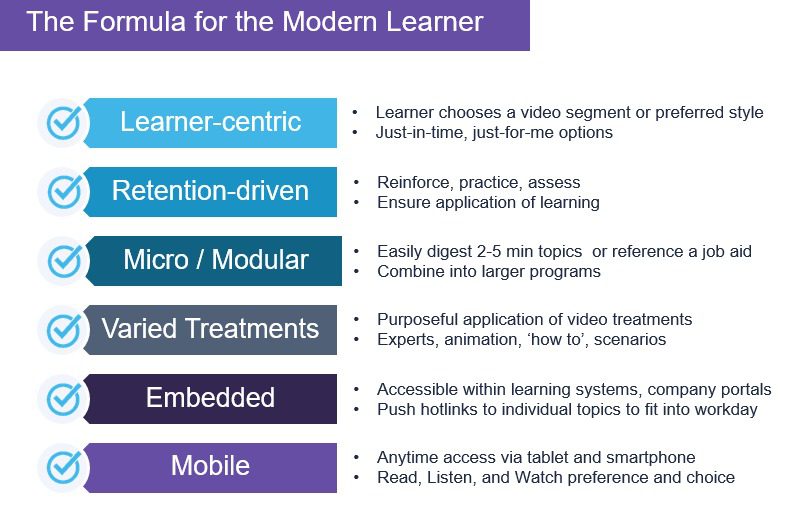
Leadership training should be contextualized and folded into day-to-day tasks.
by Bravetta Hassell
January 17, 2017
 Knocking down learning and leadership developments myths to make an impact on the business isn’t a task relegated only to chief learning officers. Companies that offer learning and development products and provide consultative services in these areas must be aware of these misperceptions as well if they want to effectively support corporate learning and development strategy.
Knocking down learning and leadership developments myths to make an impact on the business isn’t a task relegated only to chief learning officers. Companies that offer learning and development products and provide consultative services in these areas must be aware of these misperceptions as well if they want to effectively support corporate learning and development strategy.
Ultimately, practitioners and providers want the same thing: that the right resources get into the right hands and that those people understand and use them appropriately. By email, Heide Abelli, vice president for leadership and business skills at educational technology company Skillsoft shared a few learning and leadership development myths and misperceptions the company wants to counter.

In the meantime, learning leaders can make sure that stale or misinformed thinking isn’t hindering their learning and development strategy by constantly being open to new ideas, approaches and perspectives. “In addition, learning leaders should regularly challenge and question ‘conventional wisdom,’ ” Abelli said. “The raw data may well point to a very different conclusion.”
Chief Learning Officer: What are some learning and leadership development myths or misconceptions Skillsoft is working with clients to debunk?
Abelli: One myth we are working to debunk is the notion that learners in the millennial generation require radically different learning content and approaches than baby boomers or Gen X learners. Our Skillsoft research suggests this is simply not the case. One myth is that millennials don’t like to read books and only want to learn through fast-paced digital content assets, such as short, high production quality videos. However, we found that millennials view digital books as a vitally important learning mode. In fact, our research brought to light that millennials rate digital books as a more important learning asset than either baby boomers or Gen Xers. Millennials also indicated a strong need for job aids, handouts and other written material for reinforcement of learning. The results of Skillsoft’s research mirror what I see in the classroom when I teach millennial business school students. The reality is they learn about management and leadership in much the same way that my generation of business school classmates learned.
This misconception arises from the fact that millennials are the first true digital natives; because of their facility with technology they have been somewhat falsely credited with driving new work practices and expectations. The truth is the ubiquity of technology, the accelerated pace of work and the changed nature of our customer experience are the root causes of new work practices, not millennials per se.
Instead of focusing on differentiated training approaches designed specifically for millennials, organizations need to adapt to meet the needs of a much broader, more diverse group: the modern learner. Progressive L&D teams are embracing the informal, “always on” nature of learning by creating an ecosystem that offers diverse learning modalities that appeal to the modern learner. See Figure 1.

Learning leaders should not assume modern learning preferences only apply to younger generations. They should fully embrace the challenge of creating solutions that are effective across all generations precisely because they speak directly to the modern learner, regardless of age.
With respect to leadership development, one misconception that dominates the industry is the belief that one of the best ways to develop leaders is to send a designated group of individuals with leadership potential sporadically to formal offsite leadership development training programs, and assume they will return to the organization suddenly transformed into highly capable leaders. If leadership development were that simple, organizations would be overflowing with strong leaders, and that’s just not the case.
The best leadership development training is not the classroom-based, didactic training of the past, which is separated from the work context. Instead, effective leadership training is heavily contextualized into a leader’s workflows and occurs seamlessly as a leader wrestles with daily leadership challenges, both big and small. Doing that well really makes the difference in building better leadership capability across the board in an organization. Another misconception is that leadership training and development cannot be delivered effectively at scale. As a result, many organizations limit leadership development to the select few. The best leadership development solutions must be delivered at scale because organizations need leadership talent at all levels.
Organizations should shift their leadership development strategies accordingly and align their investments where they will have the greatest and broadest impact. The strategy should center upon providing leaders with access to rigorous and relevant microlearning content and modalities that can be delivered at scale. Whether the leader is wrestling with a recent crisis, how to solve a dispute within a team he/she is leading, needs quick advice about how to manage up more effectively, needs to be reminded to delegate more tasks to others, today’s leader needs quick and effective leadership training, and that training needs to be available anytime, anywhere, on any device.
Effective leadership training content also enables different learning styles and preferences, whether a leader prefers to watch, read, listen or practice depending on the specific moment of need. Providing seamlessly for self-directed pull-based learning is key, but so is the ability to push out links to individual leadership topics that fit into the workday. Finally, the content needs to be easily accessible within learning system and company portals. The point is to get the leader to the relevant content quickly and effectively for immediate application against a leadership challenge.
Bravetta Hassell is a Chief Learning Officer associate editor. Comment below, or email editor@CLOmedia.com.




